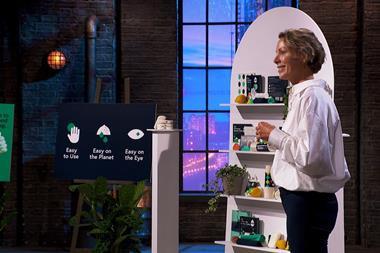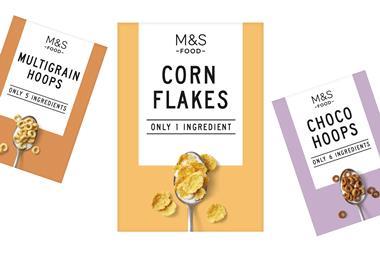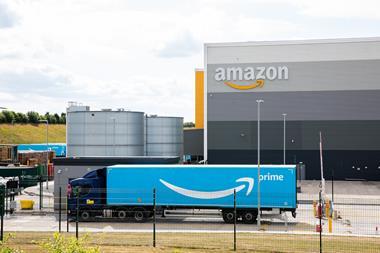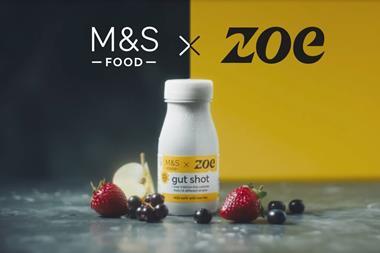At conferences across the land, chief executives of multiple retailers regularly bemoan the lack of new innovative products. But is it just this need to innovate that blocks a small supplier's efforts to actually get on shelf, or are there other factors at play?
Small companies cannot compete with larger established companies on price, so they have to use a strategy of differentiation or find a niche. So smaller companies tend to be more creative, more innovative and more flexible. Small businesses have to think outside the box. Yet buyers are working to tightly defined categories, into which they must make their products fit. Here is a fundamental problem:
innovation is defined as "something new or different", but how can something new or different be introduced if it does not fit into an existing buyer category box?
To illustrate this, Mr Crumb has won numerous food awards in Ireland and the UK, received critical acclaim in the US food media and been voted the best retail product by Irish retailers at store levels. Our chefs have taken a traditional commodity product- bread-based stuffing - reinvented it with fresh/high-quality ingredients, changed its usage occasions and generated strong sales of about 120 units per store per week throughout the year. In an independent survey, 45.4% of UK consumers said they would regularly purchase this product. Yet Mr Crumb has not been able, as yet, to get this product on to any of the multiples' shelves in the UK. Why?
As a similar product doesn't already exist there isn't a category it can slot into. In one multiple, Mr Crumb was presented to five category buyers, all of whom said: "Wow, that's a great product that should do really well for us, but unfortunately it doesn't fall into my category. Go and talk to (another buyer's name)." Two years later, this product still isn't on shelf. If buyers had said that they didn't like the taste or the packaging, at least we would have feedback to improve the product or change our offering. But the inflexible nature of category management, combined with a product that is incorrectly categorised as seasonal, has resulted in a profitable product being stuck in limbo.
When Mr Crumb started out, the stuffing market in Ireland was the same as it is in the UK today - a commodity product split between a declining ambient market and a seasonal chilled market, rather than an everyday meal accompaniment (as it is in Ireland and the US). The reason the brand has had such success in Ireland, and in independents such as Nisa, is that more flexible buying categories allow a wider scope to trial innovative products.
UK multiples and large manufacturers have become too interdependent, resulting in the multiples losing product innovation and larger manufacturers having nothing to compete on but price. Many larger manufacturers, forced to operate on tight margins, have neither the flexibility nor dedicated product development personnel to bring innovation to market. This sacrifices the long-term dynamism of both manufacturer and multiple for short-term financial gain. The end results of this are seen in regular factory closures and job losses.
The opportunity is there to create dynamic growth areas on shelf if a proactive approach to category management and product innovation is nurtured. One way to do this is by putting products before categories, bringing greater diversity to shelves and letting the consumer decide. On behalf of all those producing innovative products, let's hope we're looking at a new dawn.
Small companies cannot compete with larger established companies on price, so they have to use a strategy of differentiation or find a niche. So smaller companies tend to be more creative, more innovative and more flexible. Small businesses have to think outside the box. Yet buyers are working to tightly defined categories, into which they must make their products fit. Here is a fundamental problem:
innovation is defined as "something new or different", but how can something new or different be introduced if it does not fit into an existing buyer category box?
To illustrate this, Mr Crumb has won numerous food awards in Ireland and the UK, received critical acclaim in the US food media and been voted the best retail product by Irish retailers at store levels. Our chefs have taken a traditional commodity product- bread-based stuffing - reinvented it with fresh/high-quality ingredients, changed its usage occasions and generated strong sales of about 120 units per store per week throughout the year. In an independent survey, 45.4% of UK consumers said they would regularly purchase this product. Yet Mr Crumb has not been able, as yet, to get this product on to any of the multiples' shelves in the UK. Why?
As a similar product doesn't already exist there isn't a category it can slot into. In one multiple, Mr Crumb was presented to five category buyers, all of whom said: "Wow, that's a great product that should do really well for us, but unfortunately it doesn't fall into my category. Go and talk to (another buyer's name)." Two years later, this product still isn't on shelf. If buyers had said that they didn't like the taste or the packaging, at least we would have feedback to improve the product or change our offering. But the inflexible nature of category management, combined with a product that is incorrectly categorised as seasonal, has resulted in a profitable product being stuck in limbo.
When Mr Crumb started out, the stuffing market in Ireland was the same as it is in the UK today - a commodity product split between a declining ambient market and a seasonal chilled market, rather than an everyday meal accompaniment (as it is in Ireland and the US). The reason the brand has had such success in Ireland, and in independents such as Nisa, is that more flexible buying categories allow a wider scope to trial innovative products.
UK multiples and large manufacturers have become too interdependent, resulting in the multiples losing product innovation and larger manufacturers having nothing to compete on but price. Many larger manufacturers, forced to operate on tight margins, have neither the flexibility nor dedicated product development personnel to bring innovation to market. This sacrifices the long-term dynamism of both manufacturer and multiple for short-term financial gain. The end results of this are seen in regular factory closures and job losses.
The opportunity is there to create dynamic growth areas on shelf if a proactive approach to category management and product innovation is nurtured. One way to do this is by putting products before categories, bringing greater diversity to shelves and letting the consumer decide. On behalf of all those producing innovative products, let's hope we're looking at a new dawn.













No comments yet